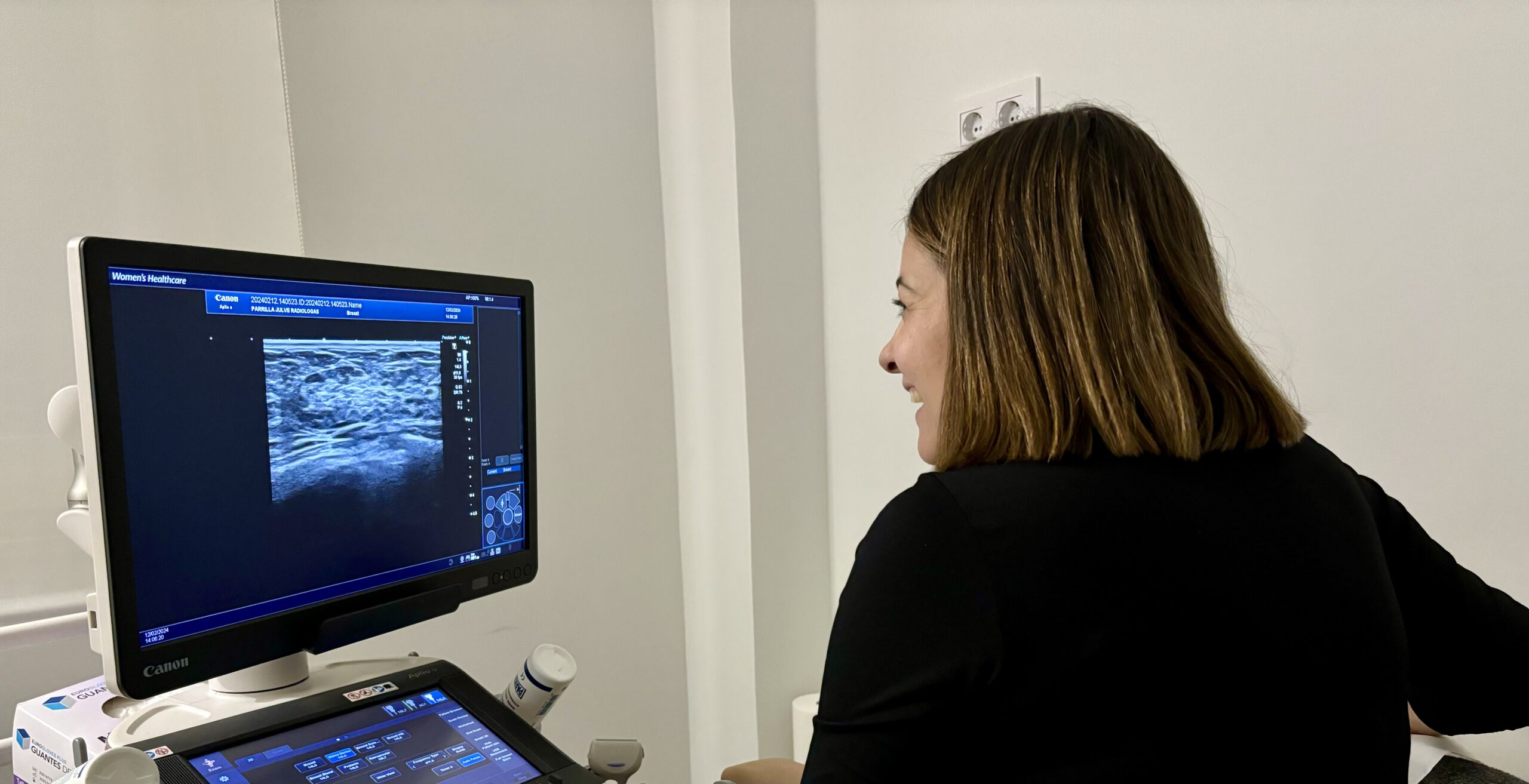Mammogram results: complete guide to interpreting a mammogram, breast ultrasound and breast resonance.
Breast diagnostic imaging tests, As we always say at Parrilla Julve Radiologists, It is a vital tool in the early detection of breast cancer. However, Interpreting the results may seem complicated due to the variety of findings that can appear on the images..
This is where BIRADS comes into play. (Breast Imaging Reporting and Data System), a classification system, that we not only use radiologists in Valencia, It is an international system developed to standardize the interpretation and reporting of breast imaging findings..
In this article we tell you in detail what BIRADS is and how it is used in radiology..
What is BIRADS?
The BIRADS is a categorization system designed by the American College of Radiology. (ACR) at the end of the decade 1980. With it, a solution was provided to the lack of uniform criteria when reporting discoveries in mammograms or other breast imaging studies such as ultrasound and MRI..
This system assigns a number of the 0 al 6 to each radiological finding, helping radiologists clearly and consistently communicate the probability of malignancy and follow-up recommendation to specialists.
BIRADS classification:
- BIRADS 0: the study is incomplete or inconclusive, which requires additional evaluation or more tests to know what type of injuries you have. At Parrilla Julve Radiologists we do not usually use Birads 0, given that we carry out the necessary tests until the diagnosis is completed or we will direct you to the next specialist if necessary.
- BIRADS 1: No findings in the breast, not good not bad. There are no findings suspicious of breast cancer that have been translated into generic language., It would be the same as saying “everything is normal.”. If this result appears on your mammogram or breast ultrasound, The most convenient thing is to continue with the usual controls and especially with your monthly self-examination. In this post we teach you step by step how to correctly perform self-examination.
- BIRADS 2: Benign findings. Typical benign features are identified on mammography or ultrasound. What might be those benign characteristics?? simple cysts, fat lumps (lipomas), galactoceles, hamartomas, nodes inside the breast, benign microcalcifications, fibroadenoma that have not changed in two years, scars from previous surgeries and breast prostheses among others.
- BIRADS 3: Probably benign findings. There is a low probability of malignancy, over a 2%, but short-term follow-up is recommended to evaluate any changes. What does this mean? In our clinic in Valencia we will perform another ultrasound or mammogram, Depending on the case, at six months. In the event that in that period the findings found grow, a biopsy will have to be performed to find out the reason.
- BIRADS 4: Findings suspicious of malignancy. Characteristics that suggest a significant risk of cancer are identified, between 3% and the 94%, and a biopsy is recommended to confirm the diagnosis. Within this category there are three subcategories: Birads 4A (low suspicion), 4B (intermediate suspicion) y 4C
(moderate-high suspicion). - BIRADS 5: Findings highly suggestive of malignancy. There is a high probability that the finding is cancer, and 95% of probability and a biopsy is recommended to confirm the diagnosis.
- BIRADS 6: Histologically confirmed cancer finding.
If you have to perform a biopsy, you can be calm, We perform it with local anesthesia and it is painless..
Importance of BIRADS:
In short, BIRADS is a tool that helps standardize the interpretation of mammograms, breast ultrasounds and MRIs and to guide clinical management decisions. By providing an objective classification of radiological findings and clear recommendations for follow-up, They help us guarantee quality care and early detection of breast cancer.
It is important to note that the BIRADS is a guide for the interpretation of mammograms and other breast imaging studies., but they are not decisive. Individual clinical evaluation and judgment as expert breast radiologists are essential to reaching an accurate diagnosis and providing appropriate care for each of you., always under our motto from person to person, with empathy, disclosure and assertiveness as flags.
Radiologists in Valencia
If there is any abnormality in your breasts, do not freak out, The best decision is to consult a professional for a proper and prompt diagnosis.. Grill Julve Radiologas, We are a radiology clinic in Valencia, experts in breast and we are at your disposal to assist you and help you..
We are on Ciril Amorós Street, 82 on and our phone 963 34 83 32 or our email
info@parrillajulveradiologas.com.


Leave a Reply